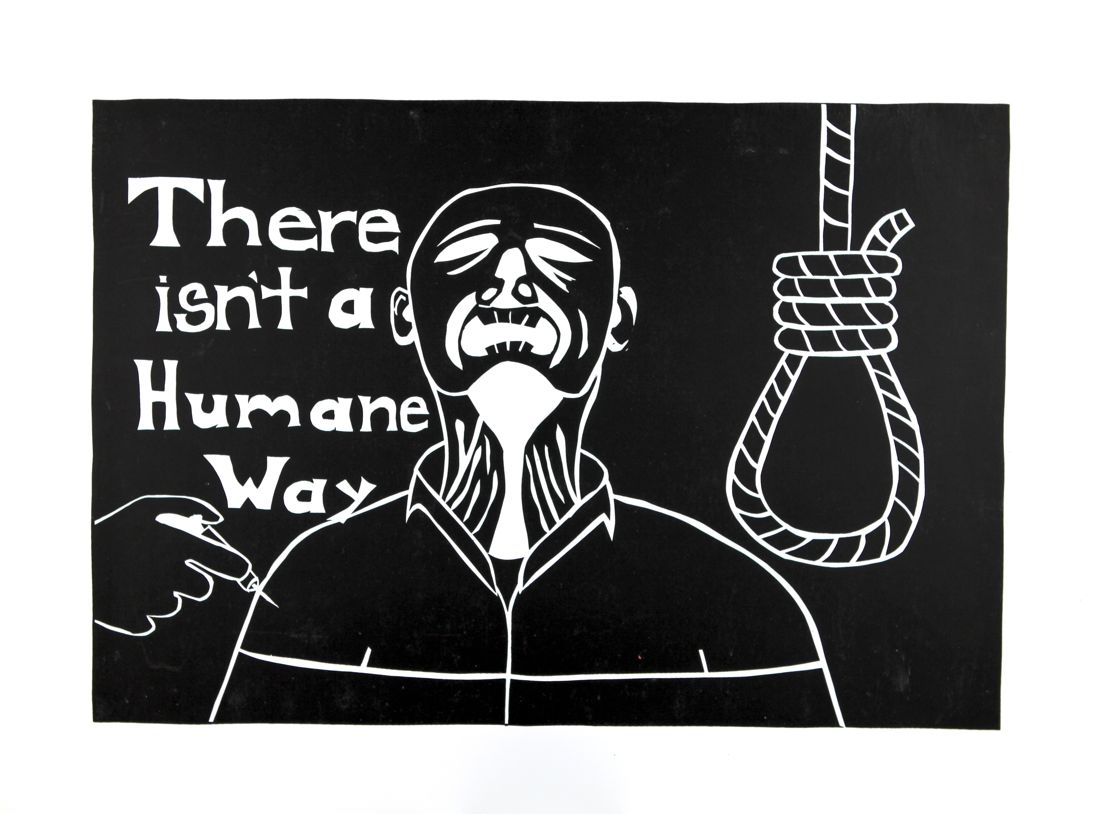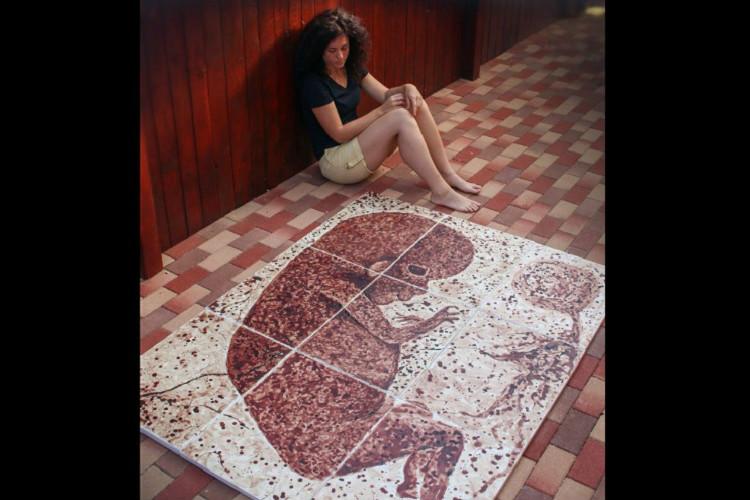
For the longest time, art was thought of as something an artist made, displayed and then left to the audience to figure out. The process of making art was seen as very cathartic and meant to be done alone. This translated to the audience as well, as art was meant to be displayed to a single person at a time with no other distractions present. This in turn created a noticeable disconnect from audience to artist, and many in the profession felt their art couldn’t make a change unless it found a way to interact with the audience. These ideas led to the formation of performance art, which started to gain some real traction towards the end of the 20th century. And it is during this time that Santiago Sierra would get his start, and subsequently change the ways people viewed performance art.
Born in Madrid in 1966, Sierra had no idea what an impact he would have on the art world as he grew up. His childhood was during a time when performance art was just forming, and coincidentally was not highly respected by artists in the more traditional fields. The point of performance art was to make a connection with the audience by having them participate in the piece, which at the time interfered with how art had been made up till then. Despite this , Sierra worked hard in Madrid and eventually went to three different Universities to study art, including the Universidad Complutense in Madrid, the University of Fine Arts in Hamburg and the Academy of San Carlos in Mexico City. These proved to be invaluable learning experiences for the artist, and his career in performance art would bloom shortly after his graduation.
Graduating from the Academy of San Carlos in Mexico City in 1997, it was only 1 year later in 1998 that Sierra had already made one of his most enduring pieces. Called “Person paid to have a 30 cm line tattooed on them, Regina Street # 51, Mexico City”, the piece involved a man being paid a day\’s wage to have a 30cm line tattooed onto his back. Like most of Sierra’s pieces, the meaning behind the work involves class inequality, and how much the poor are willing to do just to earn a little money. This piece was followed up by “8 people paid to remain inside cardboard boxes, G&T Building. Guatemala City” in 1999. Both sought to make a connection with the audience in a meaningful way, and get them to open their eyes to the horrible truths of poverty nobody wants to see. The pieces would pave the way for a career that would explode into the 21st century.
With the turn of the century brought a new appreciation for the performance artists of the past and what they were trying to do. This new found respect led many museums to seek out these performance artists for their exhibits. And since Sierra had already made a name for himself as one of the forefront artists of the performance art movement, his pieces were in high demand. This led to a large exhibit tour, with one of his pieces being shown in countless museums across Europe. This freedom allowed Sierra more resources for his craft, and incidentally his performance art pieces continued to get bigger and bigger. Some standouts include “House in Mud” in Germany (2005), ‘Polyurethane Sprayed on the Backs of 10 Workers” in London (2004) , and Veterans of the Wars OF Afghanistan and Iraq Facing the Corner in Massachusetts (2011). As his scope grew, so did his influence, and as of right now his pieces are some of the most in demand performance art pieces around today.
Santiago Sierra only ever had one goal with his art, and it is shown clearly in nearly all of his pieces. What really inspires the artist is giving a voice to those ignored and shunned by society. By showing the hypocrisies inherent in modern life, Sierra attempts to shine a light on these social problems, and get people to change. Sierra says in an interview, “At the Kunstwerke in Berlin they criticized me because I had people sitting for four hours a day, but they didn\’t realize that a little further up the hallway the guard spends eight hours a day on his feet…any of the people who make those criticisms have never worked in their lives; if they think it\’s a horror to sit hidden in a cardboard box for four hours, they don\’t know what work is…And of course extreme labor relations shed much more light on how the labor system actually works.” By utilizing performance art, Sierra was able to get his social critiques out to the public in a way he thought they would understand. And whether or not he was successful, the art he created will live on for generations.
“Santiago Sierra.” Lisson Gallery, www.lissongallery.com/artists/santiago-sierra






